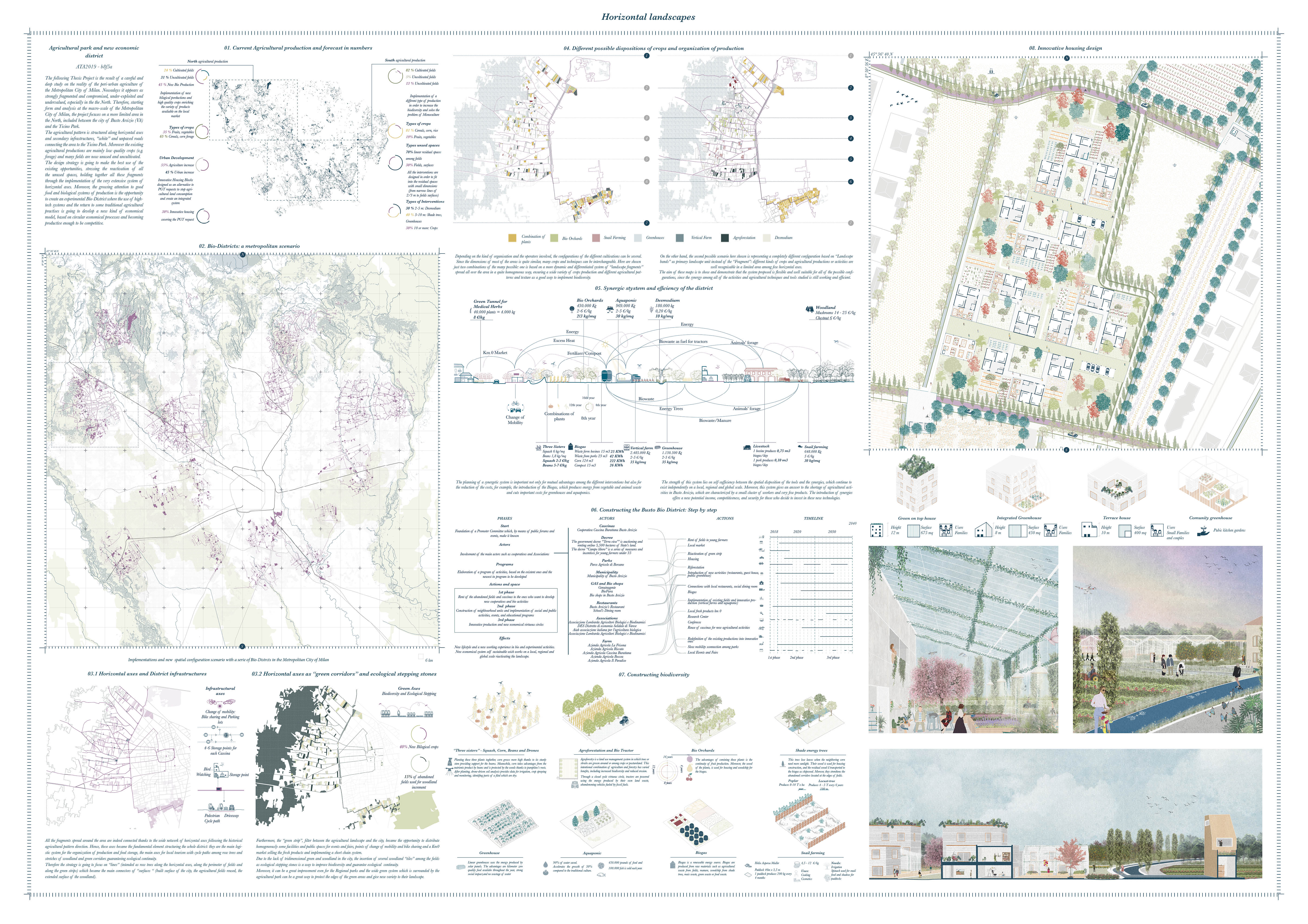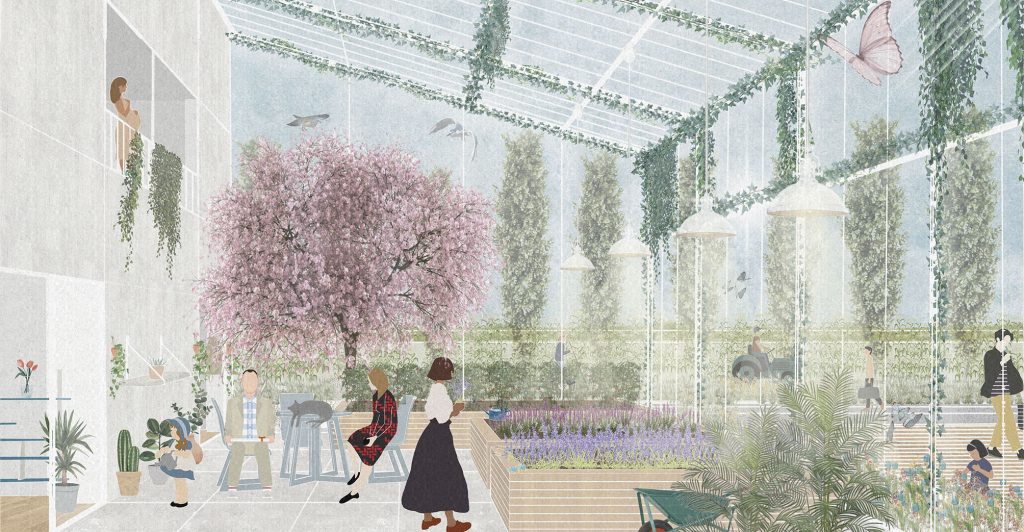This Project focuses on the reality of the peri-urban agriculture of the Metropolitan City of Milan. Nowadays it appears as strongly fragmented, compromised, and under-exploited, especially in the North. The design strategy is making the best use of the existing opportunities, stressing the reactivation of all the unused spaces, holding together all the fragments through the implementation of a very extensive system of horizontal axes. Thus, the growing attention to good food and biological systems of production is the opportunity to create an experimental BioDistrict where the use of high-tech systems and the return to some traditional agricultural practices are going to develop a competitive economic model, based on a circular economy.
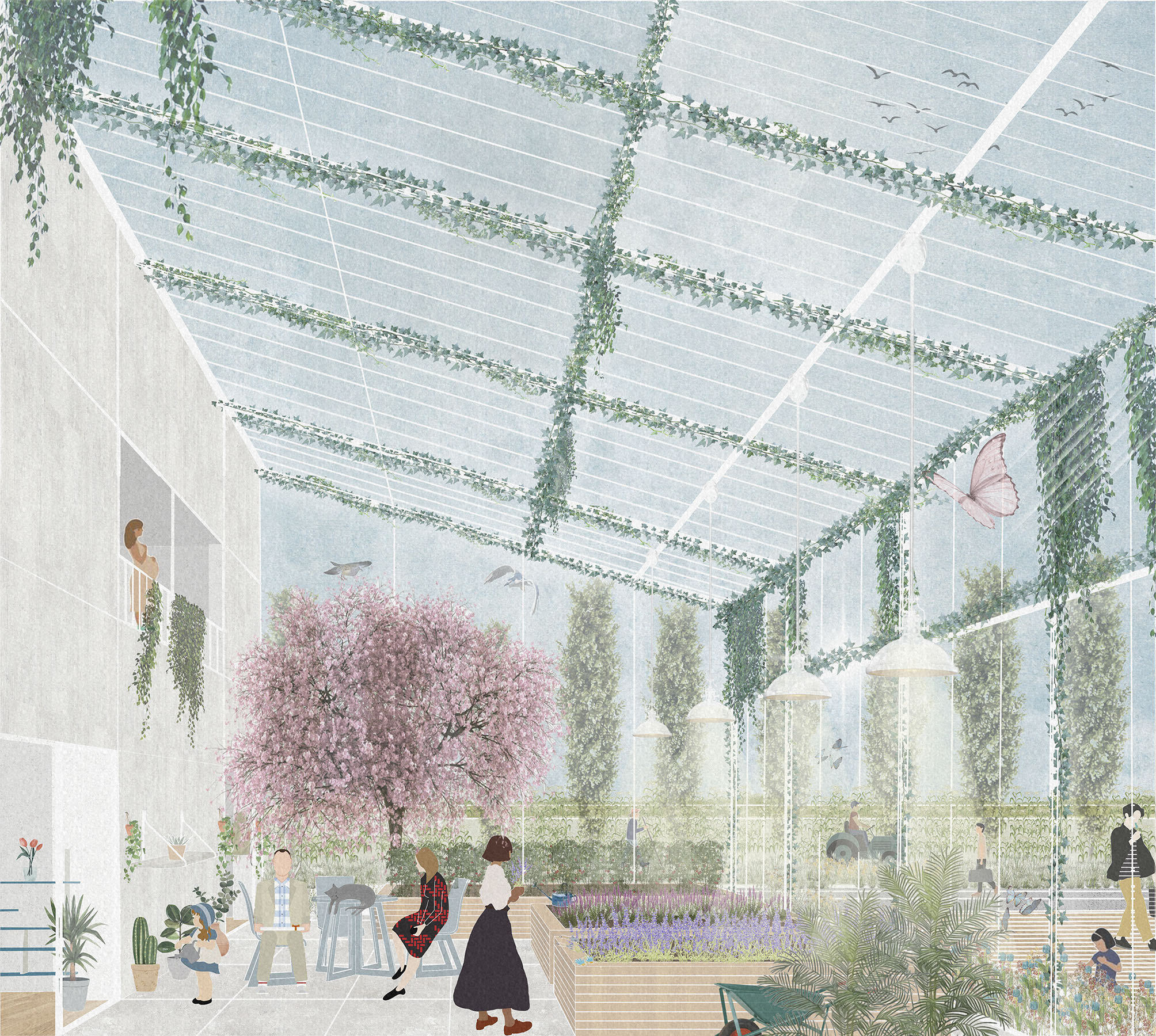
In Urban Peripheries and borders, the result of the urban growth process was to give birth to new settlements forms, characterized by phenomena of spread conurbation, highly fragmented and causing elevated soil consumption. This means a general loss of identity of the urban border: rural elements of row tree and green fields are juxtaposed with new residences, industrial settlements and service buildings.
The alternative here is to give a new identity to this border and to create a system of housing which is completely integrated with the landscape and not simply juxtaposed.
This residential development plan is set as an alternative that fights back the massive densification and the exploitation of the land proposed b the municipality. It will minimize the waterproof surfaces in favor of draining floors and extensive use of greenery. The dwellings’ footprints are set to be minimal and their coverings to be made up of innovative and sustainable materials.
The quality of these spaces lies on the maximization of shared and community areas where to make food and self-awareness grow in a permeable and well integrated natural and productive landscape.
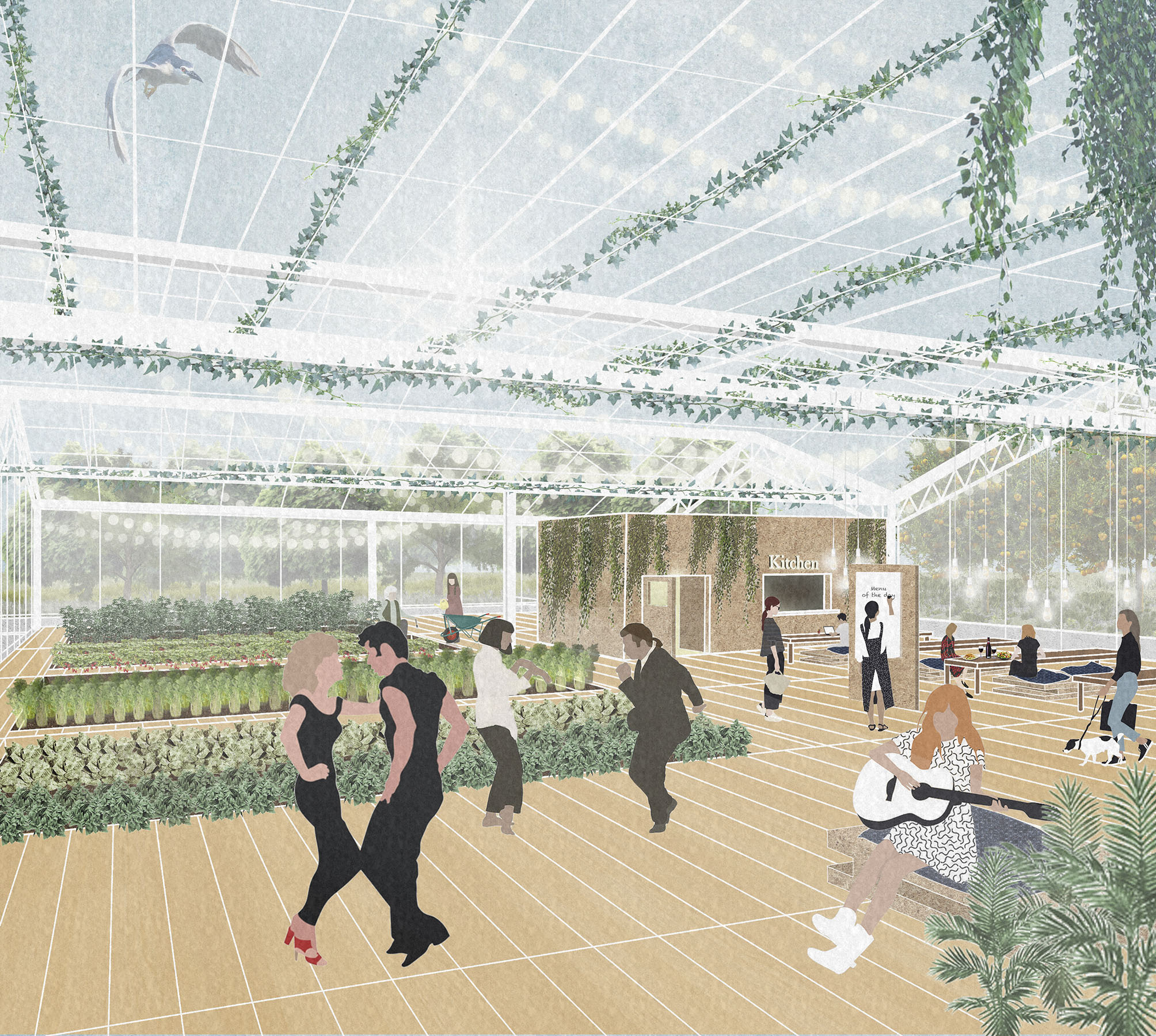
This research is going to purpose “innovative social energies” able to represents potential resources to produce new sustainable and self-productive environments.
In light of this, the idea is to push the start of new practices that are able to resist the hard exploitation of natural resources and to come up with new sustainable uses for the territory, in the direction of a new awareness about the place and giving new identity to these local contexts of peri-urban agriculture still too weak and considered as residual
Furthermore, the characteristic of permeability and public fruition, typical of parks, is here applied to a productive and agricultural landscape, usually inaccessible.
This can be considered as a plusvalore which make the project even more innovative and able to respond to several needs of the context, considering such a rich and wide natural heritage of existing parks and woodlands.
Ultimately, the integration of this productive system with the urban consolidated texture, where the attention to biological and fresh products is well recognizable in the several kitchen gardens already existing in Busto Arsizio, both private and public, , make this district a really strong system able to give a significant boost to the whole area, invoking also the existing productive activities and creating wider system, going to reach, in a possible future scenario, even the Metropolitan scale.
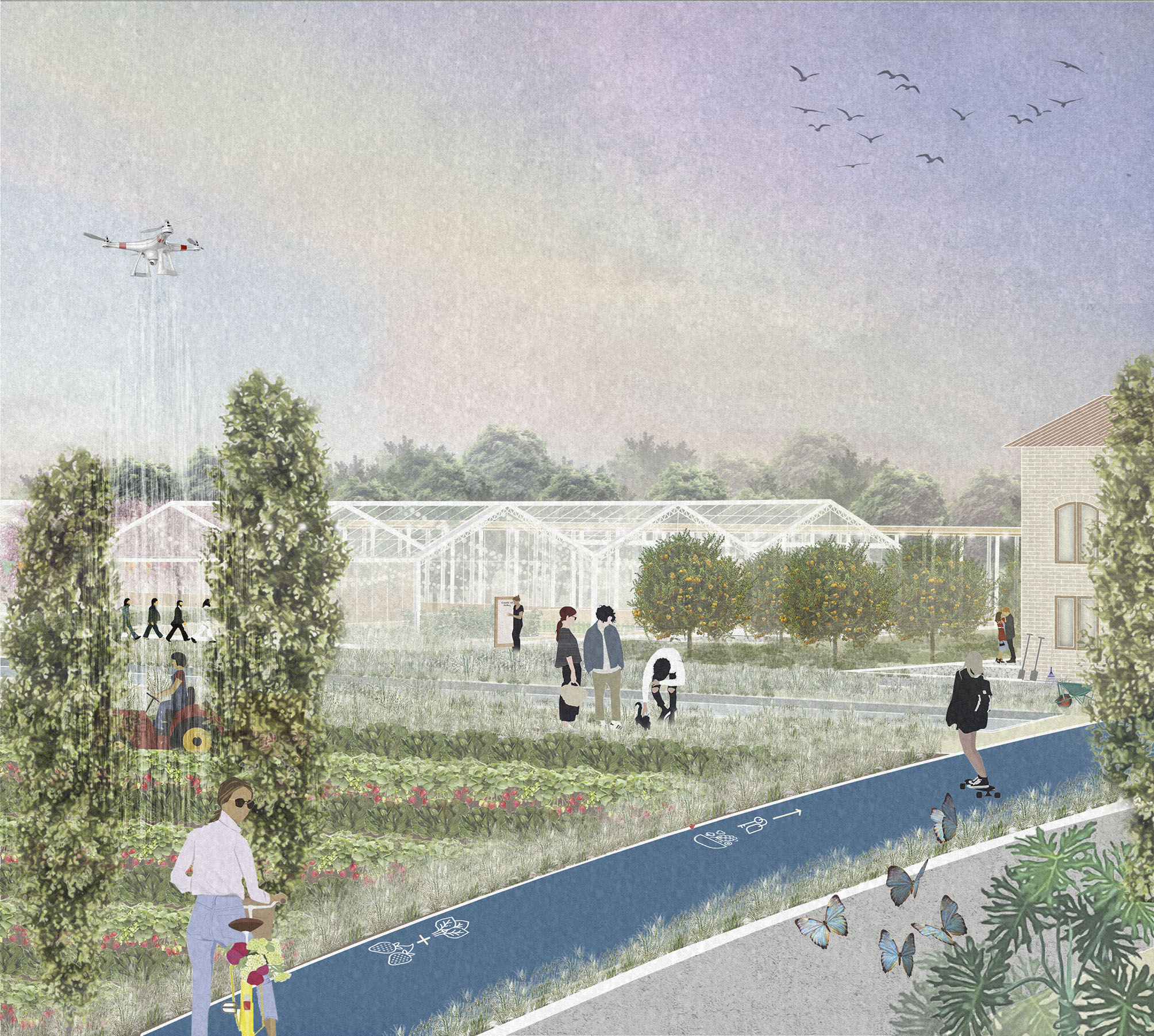
The Board:
